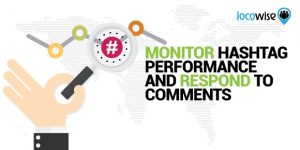Meeting customer demands is hard. It gets even harder in terms of shipping. You have most likely heard of the Amazon effect. It’s the company’s approach to e-commerce shipping and logistics when a customer gets everything he or she wants in the shortest time possible. For Amazon Prime, for instance, online shopping means no more than two days, it’s literally a synonym. Given the bar is that high, the Amazon effect keeps all market players on their toes. The pressure is about delivering 150% in terms of logistics, transportation, shipping operations in order to remain competitive.
Despite fatigue from Covid, we have to admit: it did bring changes to how things get done. Now a volatile and rapidly transforming environment demands businesses to be chameleons, to be able to adjust. Still, the role of supply chain in business is overlooked. Mismatch and lack of technological synergy bring chaos. The domino effect triggered in one department can shatter a business in a number of months.
This is exactly what happened to Target in Canada. I offer to analyze this case, detect the gaps and vulnerabilities and suggest the ways technologies could make things better.
First things first: supply chain can make or break
Let’s begin with the essentials. What does business value stand on? Normally you would answer that the figures, asset dependence, financial analysis, and so on. Not untrue. However, if being realistic, it’s the intangible areas that express the real value. I mean the quality of leadership, exposure to changes, and the ability to embrace them, the openness to innovations, and the ability to juggle the necessary competencies where relevant. Basically, there is a technological posture, a mindset that is pursued across all levels.
The devil is in the details. This competitive market urges companies to use every possible way to boost their performance and pump up the system. We are speaking about the tools that add value to every link in the chain. Apart from cost-cutting, raising your own bar speaks a lot about your attitude towards reputation.
The challenge is to make various frameworks speak to each other seamlessly. The supply chain is the engine that enables and drives myriads of functions. And when the engine breaks, it causes reputational damage. It is hard because people don’t forget. Turning yourself inside out doesn’t mean you will get your good name back.
According to Logistics Bureau data, 79% of companies with robust supply chains tend to increase their revenue greater than the average market mark. Therefore, the strategic role of the supply chain and its efficiency cannot be underestimated.
Target: what went wrong
The case of Target Canada is one of the best examples reflecting the impact of supply chain issues on the brand. Everything began with an unprecedented expansion plan. The brand had to rapidly enter the Canadian market and the time frame was ambitious.
WhenTarget opened its doors to customers, the stores welcomed shoppers with empty shelves. There was even quite a curious and sad thing: Target printed out weekly flyers where almost every product presented on the cover was out of stock. The problem with the supply chain was too apparent to deny.
At that time Target was integrating new systems across the organization, with a warehouse management system being introduced. Embracing a new framework is a daunting and challenging task for a company, and insufficient change management significantly hinders the process. Installing multiple systems at the same time was supposed to be even harder. The product data management system was not working properly, it lacked integrity and accuracy. Visibility suffered greatly causing bottlenecks in distribution centers.
The issues in orders and schedules led to a mess in shipping dates and a mismatch with Target’s merchandising plan. Therefore, the centers had to add additional offsite warehouses which only contributed to less visibility and control. At the end of the day, only after two years of existence, Target Canada shut its doors. An invalid supply chain was the root of this flop.
Target’s case teaches us several crucial lessons about what shatters the supply chain and shatters foreign expansion:
- miscommunication with vendors
- implementation of new technology that is not aligned with business strategy
- no training employees
- inaccurate data and being forced to fix things manually
- little accountability
Each of these points can be tackled by a mindful and informed choice of innovative solutions.
What could be done to help
The introduction of new technologies implies forward-thinking management. The transformation is smooth and painless when everyone in the organization realizes why and how it happens, as well as their own role and responsibility. There has to be an entire innovative mindset and culture nurtured by the company’s leaders, and it demands a lot of training. Other than that, choosing relevant technologies is a matter of great importance.
Big data analytics in supply chain management is another level of inventory management. In order to avoid a mess, inaccuracies and to boost overall performance, big data analytics provide sufficient monitoring, structure to data, and make the warehouse more adaptive in the face of evolving customer needs. In turn, it helps avoid considerable losses and increases customer satisfaction. Therefore, leveraging big data allows for instantaneous reactions to every minor or major change.
Artificial intelligence and corresponding tools can enhance operations by bringing more speed. Integration of AI makes a facility smart, predictable, and optimized. Time-consuming tasks and routine manual processes are delegated to algorithms. Automation simplifies operations and cuts costs. Different AI tools can pack items, talk to customers via chats, give updates on the parcel status, leaving no room for delays, errors, and misinformation.
Visibility issues arise from the lack of integrity. It means that different systems being integrated into operations find it hard to interact seamlessly with each other. Here, interconnectedness is vital, and IoT builds those connections. Tracking product is fulfilled in real time across the entire supply chain. Interconnected devices can be used to control storage conditions and make sure goods are in order. Supply chain management acquires end-to-end transparency where the entire journey of a product from a shelf to a customer is an open book, but not the cause for concern.
Business & Finance Articles on Business 2 Community
(40)
Report Post


